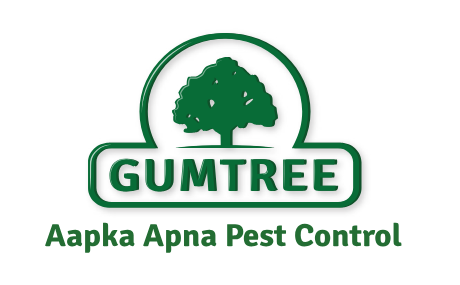The housefly, Musca domestica, one of the most common flies found in homes and food
establishments, has a nuisance value. People hate to see them fly around, get into their food,
and land on them. And when houseflies multiply into large numbers, it can be a serious issue
as it is very difficult to control them at that stage. Luckily, there are ways to control
houseflies effectively. Read to find out how you can control flies naturally without using
pesticides other than as a last resort by using an integrated pest management (IPM) approach.

Why are houseflies an important pest?
Houseflies are known to be a nuisance pest because they can transmit diseases such as food
poisoning, typhoid fever, tuberculosis, and eye infections. In addition, house flies carry the
microorganisms which cause numerous diseases through their breeding and feeding habits.
Houseflies also harm farms by infesting livestock sheds and causing a nuisance to farm
animals such as cattle, poultry, and sheep.
House flies can also spread diseases creating an emergency due to their large population size.
For instance, house flies are known to breed rapidly in areas with high population densities,
making it difficult for humans to control these pests using conventional pest control methods.
Therefore, a housefly population control program is essential for regulating insect
populations and reducing economic losses.
The life cycle of houseflies
House flies undergo four life stages: egg, larva, pupa, and adult. The housefly is a small
insect that can be found worldwide. Female house flies can lay up to 130 eggs at a time.
These eggs hatch into larvae, also known as maggots. Larvae develop into adults in 3-7 days,
and adults live for 15-25 days. House flies are most active in warmer months, with multiple
generations produced in a month.
House flies are known for their ability to spread disease and nuisance. They are often
attracted to garbage and other food sources, leading to increased populations. An integrated
pest management program is necessary to control houseflies effectively. An IPM program for
houseflies involves preventing house flies from accessing garbage, removing potential
breeding sites such as pet food scraps or manure from farms, and using chemical pesticides
when necessary.
Key steps for preventing houseflies
The housefly is a common nuisance pest. It can cause health concerns due to its ability to
carry bacteria, viruses, and other disease-causing substances on its body. Infected houseflies
can also cause damage by feeding on organic matter, such as garbage and pet food, creating
large housefly populations that homeowners may not want. Given these reasons, it is
essential to prevent houseflies from entering your home.
You can start by ensuring that windows, doors, and house vents are properly screened, sealed,
and free from damage. Screening openings will prevent houseflies from getting into your
home in the first place. You can also ensure garbage cans have tight-fitting lids and that the
bags are taken out as soon as they are full, preventing houseflies from nesting in organic
matter and breeding.
Another way to control houseflies is to store organic material in airtight containers. This will
help keep the organic matter clean and free of housefly eggs or larvae. The last step is to
remove organic material, such as rotten fruit or leaves in which house flies lay eggs. Again,
organic matter removal will help reduce the number of houseflies entering your home.
How to monitor housefly presence and population?
House flies can be a nuisance and a serious threat to your health. To effectively control house
flies, monitoring their presence and population is important. To monitor for houseflies, you
must inspect your home for signs of a housefly infestation, such as eggs and larvae.
Once you’ve identified the housefly problem, you can take steps to prevent further
infestations. Housefly prevention steps could include sealing off any potential entry points,
such as cracks around windows and doors, to prevent houseflies from entering your house.
You also need to properly maintain your home by removing sources of standing water and
overgrown vegetation. Fly ribbons and fly glue traps are effective monitoring tools to check
the level of the housefly population. Fly bags and jars are also simple and cheap non-
chemical methods for monitoring housefly populations. Also, consider using fly bait to
control adult houseflies or reduce their numbers in the environment.
Finally, properly dispose of organic waste, including dog feces, rotting fruit, and kitchen
waste. By taking these steps, you can control housefly populations and create a healthy
environment for yourself and your family without harming your health.
Control of houseflies through chemical pesticides
Chemical pesticides have been used to control house flies, but this method is not ideal due to
potential environmental effects and reduced effectiveness over time. Instead, biological
control organisms such as parasitic wasps, nematodes, and fungi have been used for more
effective and sustainable solutions.
Preventative measures such as regular cleaning and elimination of breeding sites can help
reduce the need for chemical pesticides.
Professional fly control services through pest controllers may be necessary for serious
infestations to reduce the spread of diseases. Therefore, it’s important to monitor house flies
closely and correct any issues that may arise quickly to keep your environment safe and
healthy for everyone.
Use of glue traps in the monitoring of houseflies
Glue traps are effective for monitoring house flies as they capture the flies and allow for easy
counting. Different species of filth flies can be trapped and distinguished using glue traps,
with house flies being the most common ones which such traps attract. Glue traps also trap
blue bottle flies, green bottle flies, and flesh flies.
Glue traps should be replaced regularly as the glue can become less effective. In addition,
these devices should be placed in areas where house flies are likely to congregate, such as
around garbage cans or compost bins.
Before using a glue trap, please read the instructions and check the trap’s catch rate with a
trial run to ensure it effectively captures house flies.
That said, you can also use other methods to control house flies effectively, such as spraying
chemical pesticides or using fly bait on the ground to prevent house fly access to areas like
your home or garden.
Integrating different approaches for effective fly control
An integrated chemical and non-chemical control approach is recommended for effective fly
control. Chemical control methods include insecticides, such as insecticide sprays,
insecticide bait, insecticide dusts, insect growth regulators (IGRs), and insecticide aerosols
are available for housefly control. However, the use of pesticides is only one approach and
part of fly control and must not be the sole method.
Natural control methods include the exclusion of breeding sites, sanitation, improved hygiene
and sanitation, and the use of beneficial insects. However, improved hygiene and sanitation
are the most important factors in fly control.
In addition to these methods, electric flycatchers and Fly Traps such as fly ribbons, fly paper,
fly bags, and fly jars are also effective methods for trapping flies and reducing their number.
Combining multiple approaches can be effective for fly control as it reduces the number of
flies without causing significant environmental damage. For example, professional pest
controllers use targeted treatments such as baiting to reduce house flies from the environment
quickly.
Frequently Asked Questions (FAQs)
What is the harm caused by houseflies?
Houseflies can spread a variety of diseases, one of which is food poisoning. They can do this
by contaminating food with their feces and larvae, which can cause food poisoning.
Eliminating organic material that houseflies use to lay eggs prevents houseflies from
spreading food poisoning. Therefore, housefly prevention includes anything that could serve
as a breeding site, particularly garbage and rotting organic matter.
Another way houseflies can spread disease is if they land on food. If houseflies land on food,
it is possible for them to spread foodborne illnesses. Ensure your kitchen windows and doors
are screened, so houseflies do not enter the kitchen.
Where are houseflies most likely to occur?
House flies (Musca domestica) are most common in warm climates and most active during
summer.
House flies are present almost everywhere humans live due to the messiness of humans.
For example, house flies can be attracted to food odors, making them more prevalent indoors.
They typically lay their eggs in rotting material, food waste, garbage, or animal feces.
What are the key attractants of houseflies?
One of the key attractions for houseflies is the presence of material in which they can lay
their eggs, such as rotting material and animal feces. Additionally, strong food odors or areas
with high concentrations of human activity can also attract houseflies.
Houseflies have a worldwide distribution and are quite active in warmer temperatures. In
addition, they often reproduce rapidly, making them a risk to public health.
Is it possible to control houseflies only through chemical pesticides?
There are many ways to control house flies, but only a few rely on chemical pesticides.
Chemical pesticides can be used as a form of house fly control. However, they are not the
only method available. Other methods, such as improved hygiene, electric flycatchers, and
fly traps, are also available.
Biological control organisms such as bacteria, nematodes, fungi, mites, and insects can
control house flies under certain conditions.
What is the ecological role of houseflies?
Houseflies are found in virtually every part of the world where organic material exists, and
conditions are right for decay. They play an important role in breaking down dead organic
material, such as carrion.
What is the role of electric flycatchers in managing houseflies?
Electric flycatchers are insect light traps (ILTs) that use ultraviolet (UV) light to attract
houseflies and trap them using glueboards. Electric flycatchers are second-generation ILTs
and are the successors to fly killers, which use an electrical grid to electrocute houseflies
attracted to the trap by UV light.
In commercial pest control, pest controllers use electric flycatchers to monitor housefly
populations indoors.
After assessing the housefly levels through the housefly catches on the glueboards, the pest
controller takes steps such as preventing entry, eliminating organic matter used by houseflies
for breeding and baiting to control houseflies.
Conclusion
Prevention is the best approach to controlling housefly populations. Integrated pest
management (IPM) involves several approaches to managing a housefly infestation, such as
sanitation, monitoring and control through chemical pesticides.
IPM helps to reduce the use of chemical pesticides to a bare minimum which is unavoidable
in controlling a housefly infestation.
IPM also helps preserve food resources such as vegetation and fruit, which housefly larvae
feed on. Several monitoring tools such as fly ribbons, fly paper, fly bags, fly jars and electric
flycatchers, can be used for housefly population assessment. A good pest management
program should include a variety of methods for monitoring pest activity and population
trends.
Gumtree Traps has several products, such as Fly Bag, Fly Jar, and Fly Strip, which are
simple, inexpensive, ready-to-use fly monitoring tools for consumers and businesses. In
addition, Gumtree Traps supplies Universal Glue Boards for use in electric flycatchers. You
can browse our website’s Housefly Control products section to learn more and buy such
products.







